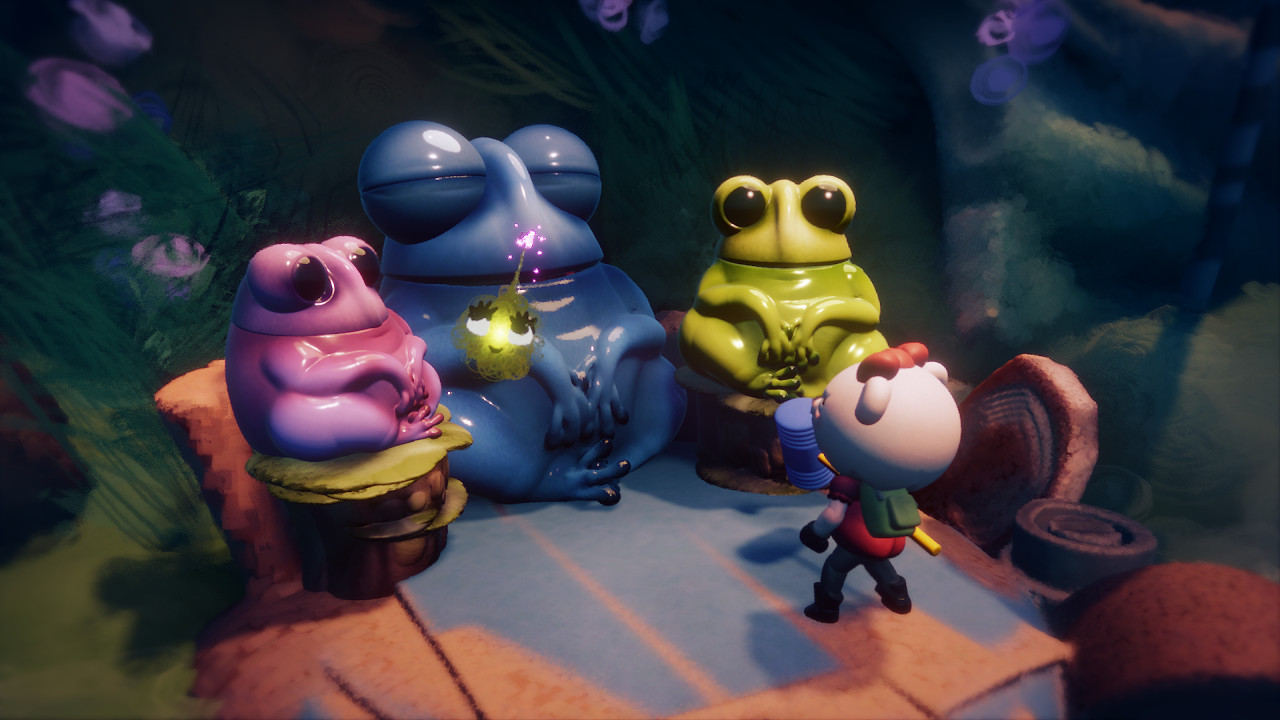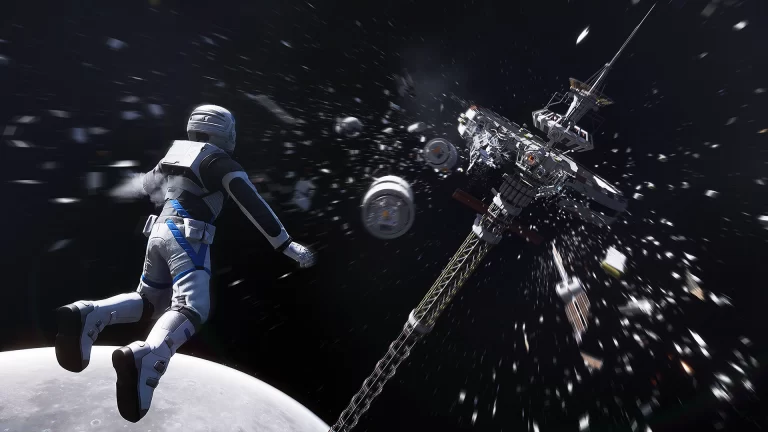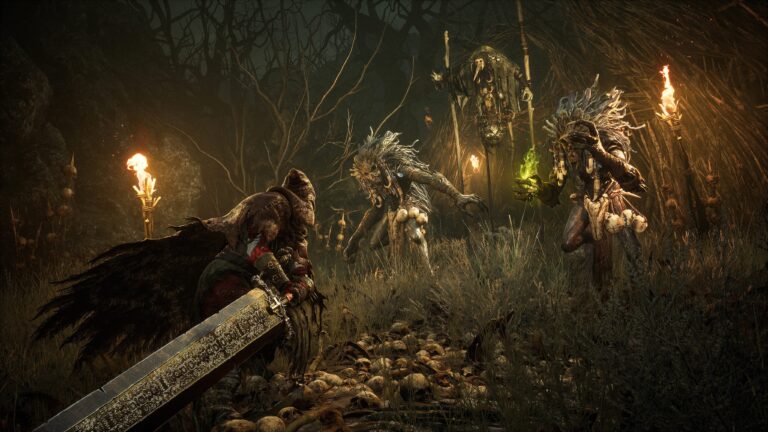Six years after its announcement, with development rebooted twice, Dreams unleashes its creative vision. The April 2019 early access release let the community flex its muscles with staggering results. The official release, however, marks a watershed moment for the industry. Games like Little Big Planet and Project Spark had merits, but Dreams’ toolset culminates in the ultimate form of expression.
Limitless Variables
Creation in Dreams seems daunting at first because of its expansive suite. Players can create character models from scratch or use existing presets, with the option to tweak 30+ variables including the strength of their lean animation, center of gravity, movement stiffness, the angle at which models can walk up slopes before sliding, and acceleration and deceleration—separate sliders from walking and running speeds.
There’s even a decked-out music tool akin to professional music software that musicians can make the transition to with little resistance. None of this touches the logic-driven facets such as AI behavior, splitters, microchips, persistent elements like inventories, and animation keyframes.
A creation’s gameplay is limited only by the user’s ambition and dedication to understanding its complex logic system. Users have created competent first-person shooters, 3D brawlers, third-person action games, 2D fighters, platformers, racing games, turn-based RPG’s, adventure games, Sim City-like titles, physics sandboxes, and complex puzzle games involving play space rotation like Fez or Crush. This doesn’t include experimental creations like short films and music videos.
Welcome to The Dreamiverse
Dreams’ effortless balance between complexity and accessibility allows creativity to flourish in a way unlike any other game in this genre. It distances itself from traditional development software through its encouragement loop.
In creating an inviting atmosphere through its cutesy user interface characterized by lovable imps, readable logos, and bubbly shapes, Dreams never feels like work because the learning process is fun.
Tutorials are charming and stress-free. Soothing voice-overs and video overlays showing how to do something punctuate this encouraging attitude, with labeled steps making it easy to skip to that on which someone needs a refresher.
Dreams excels at giving its fledgling creators enough info to keep them pushing forward. In addition to the dozens of tutorials spanning across different aspects of game development—from sound design to sculpting to keyframes—Dreams also provides several useful “how to” videos that delve into more useful, individual scene elements.
They’re different from tutorials in that they’re accessible during creation, covering useful mechanics such as how to quickly assemble levels, make characters blink, how to make grass, rain, wood, forests, and magical effects, how to make first-person characters—the list goes on.
Fostering Community
Even with all the tutorials and encouragement in the world, human beings have limits. While it’s ideal for everyone to learn Dreams’ ins and outs, the reality is most people will find their niches.
Some Dreamers might make great music while struggling with cinematics and lighting. Others may sculpt detailed human characters with functional gameplay but have trouble modelling miscellaneous objects. Others may have a knack for setting a mood through lighting without a fleshed-out scene to complement it.
Dreams answers this call with its emphasis on remixing. Dreamers can make levels remixable, allowing other creators to tweak those levels and republish them as their own. This hands-on approach creates further learning opportunities by allowing others to view behind-the-scenes wiring and logic.
Individual props, characters, interactive objects with triggers, sound effects, and music can also be searched through the Dreamiverse. Additionally, multiple users can work on a single project with its collaboration feature, and Media Molecule lists every creator whose work was used in a project. If that’s not enough, users can break down a level’s genealogy to view which assets were carried over from other Dreamers.
Dreams isn’t about being the best creator. It’s about celebrating each other’s commitment and rising together to help others fulfill their creative vision. Dreams’ creator community is like a non-toxic fighting game community. Sharing tech is how the collective evolves and the game along with it.
Let’s Just Play
Then again, some people buying Dreams have no interest in creation no matter how many footholds the game gives them. That’s fine, too, because the currently available games are enough to keep anyone entertained for months.
There’s no shortage of worthwhile funny, experimental, and polished games across dozens of genres. The variety and quality of projects showcase Dreams’ flexible tools.
Better Sonic experiments have been made within Dreams than most of Sonic Team’s output over the past decade. One user reimagined the cancelled Saturn Sonic X-treme, with a fish-eye lens distorted camera and 32-bit visual style that capture the original project’s intent.
The shocking reimaginings don’t end there. P.T. has also been faithfully recreated. Its set dressing, sound design, and event triggers could fool someone that hasn’t played P.T. since launch into believing it’s the real deal. Likewise, Robo_Killer_v2’s Fallout 4: Dreams Edition level can be mistaken for Bethesda’s game at a glance. This attention to detail is made more remarkable when taking its 4-person team into consideration.
Original ideas flood the Dreamiverse as much as these impressive imitations. In fact, they’re often more impressive than recreations. Original games range from fun, mindless distractions like a one-handed cooking simulator to fleshed-out experiences worth purchasing.
Saidybah, in particular, must be commended for their work-in-progress 2D fighting test. It currently uses generic puppets with some rough animations, but it feels like a little brother to Arc System Works’ games. It’s a four-button fighter with directional inputs for special moves and movement cancelling, but its Roman Cancels steal the show. By letting players reset the dummy to its idle animation immediately after connecting blows, expansive free-form combos are made possible. In its unfinished state, it plays better than some “polished” $30-60 fighting games like SNK Heroines.
Celebrating Variety
Games are the most ambitious projects, but they aren’t inherently more valuable than other creations. Media Molecule equally respects different avenues of expression, making it easy for users to publish and search for non-traditional projects falling under three categories: Game, Audio-Visual, and Showcases. Showcases compile different user creations of certain types into a single dream akin to art exhibits.
The community has taken a liking to realistic food rendering, dioramas, and still life paintings, making them perfect showcase material. Short films aren’t as common as audio-visual scenes like modeled interiors or nature, but the ones that exist are more dynamic than anything the Little Big Planet creation tools could muster. Even the shoddy films with poor modelling and wonky animation are more entertaining because of the extra control afforded by its granular lighting, visual filters, and camera settings.
Dream a Little Longer
Dreams makes dreamers out of everyone. Because people aren’t pressured into making full-fledged games with functioning AI and gameplay mechanics, the creative but nontechnical lot can find fulfillment in just sculpting, making music, or painting. Media Molecule and its community celebrate everyone’s contributions. Forget “Netflix and chill”. It’s all about that Dreams and chill. Literally. Load up a lofi hip-hop study session level and unwind.
No related posts.







